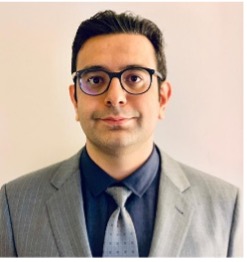“Next Generation Optoelectronics for Sensing, Healthcare, Quantum IT, and AI”
Friday, Feb. 17 at 1:00pm
LAR 234
Abstract
The recent breakthroughs in photonics research, particularly in the development of next generation semiconductor optoelectronic devices enables the potential to revolutionize the development of unprecedented capability in information processing including edge sensing, quantum processors, and machine intelligence. For example, most optical sensing and datacom applications require an efficient and compact photodetector; here I will highlight prospects and prototype demonstrations of highly sensitive, low noise, and high-speed capable photodetectors achieved by two dimensional-material-based photodetectors. Their high sensitivity shows a path to possible room-temperature single photon detection or faint signal sensing for quantum sensing or quantum information processors (QIP).
Integration of the photodetectors with silicon waveguides creates hybrid quantum photonic devices with performance comparable to state-of-the-art silicon photodetectors. Furthermore, I will show a roadmap to tackle the still unsolved challenge of seamless integration of light-sources to photonic chips via monolithic laser integration. The unique slow-light along with phase-engineered cavity feedback enables compact and high-power lasers with 500% improvement over SOTA.
The development of on-chip integrated lasers using photonics wirebond technology is also a significant step forward, allowing for robust connections with low losses, making it possible to create photonic circuits for quantum information processing. Photonic tensor cores (PTCs) have also emerged as a promising solution for low-latency hardware, with photonic memory accesses being faster and more energy-efficient than conventional SRAM. Additionally, the novel hexagonal transverse-coupled-cavity design for Vertical-Cavity Surface-Emitting Lasers (VCSELs) offers cost-effective, energy-efficient, and reliable states for Quantum Ising Machine, which could have significant implications for data communication, sensing, automotive, and photonic AI systems. Moving forward, the use of artificial neural networks (ANNs) in photonic chips could provide a high-performance, scalable, fully parallel, and autonomous computing platform for quantum processors. The integration of transverse coupled cavities with VCSELs allows for the creation of over 1000 hardware nodes and the training of the network to perform complex tasks such as digital-to-analog conversion and XOR classification. Moreover, the use of transparent conductive oxide (TCO) material in a photonic chip could allow for high-speed data processing, with power efficiency of 1 fJ/bit already achieved at 40 GHz. By pushing the power consumption to the quantum limit, it could be possible to fully realize the potential of the quantum processor. Overall, the recent advances in photonics research present exciting opportunities for the development of highly efficient and powerful quantum processors for a range of applications.
Biography
Dr. Hamed Dalir is an innovator in the field of high-speed photonics computing, quantum AI, and cryptography. As the CEO of Optelligence LLC, located in Virginia and Maryland, he focuses on the design, implementation, and verification of novel AI devices, rapid device prototyping, ASICs, digital-to-analog converters, blockchain, and secure hashing algorithms. He has raised over $18 million in funding from organizations such as AFWERX, NASA, Army, AFRL, BAH, Broadcom, ONR, JSPS, NIST and private investors. He is the co-author of over fifty academic journal articles, many of which have been published in prominent magazines such as Nature Communications, Optica, Laser Photonics Review and Applied Physics Review. He is also given over 100 keynote speeches, invited talks, and themed lectures at universities and major international conferences. Dr. Dalir has filed for and been awarded more than 40 patents for his innovations, licensing some of them to major electronics manufacturers and financially stable start-ups. Dr. Dalir has held research positions at prestigious institutions such as the University of California, Berkeley, and as a senior research scientist at a University of Texas-based tech start-up. He has received multiple awards for his work, including the Yoshida Foundation Award (YFA-2011) for the Development of Future Leaders for Changing Times, the Young Scientist Award from JSPS (2014), and the AFOSR Research Award (2021). He is a Senior Member of OPTICA and IEEE, as well as a committee/session chair of SPIE. Dr. Dalir is also the Associate Editor of Printed Electronics (Frontiers) and EPJ Quantum Technology (Springer Nature’s) journals.

